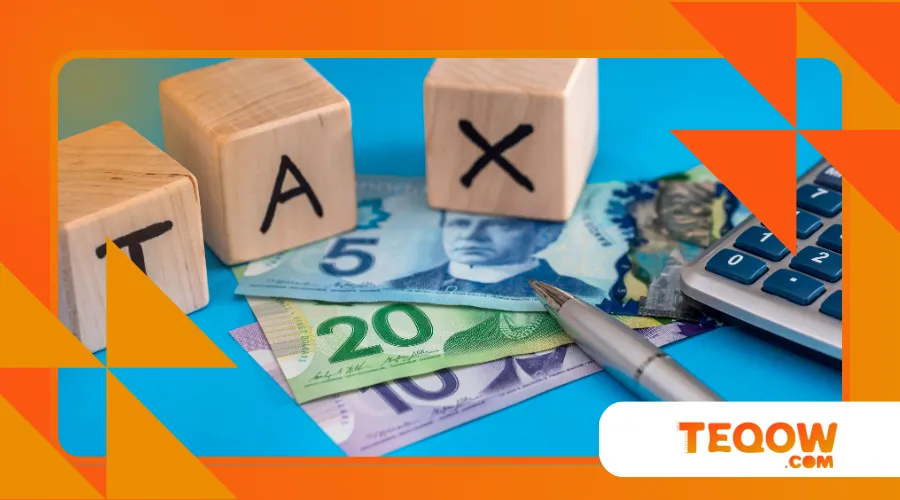Tax Benefits for Canadians: What You Need to Know

Tax benefits for Canadians are more than just a bureaucratic perk, they’re a lifeline for financial planning, offering tangible ways to keep more of your hard-earned money.
In a country where the cost of living continues to climb, understanding these benefits is not optional; it’s essential.
Whether you’re a young professional, a small business owner, or nearing retirement, the Canadian tax system provides opportunities to reduce your tax burden and boost your financial health.
But here’s the catch: these benefits are only as valuable as your ability to navigate them.
Why leave money on the table when you can strategically leverage deductions, credits, and incentives?
This guide dives deep into the most relevant tax benefits for Canadians in 2025, offering fresh insights, practical examples, and actionable strategies to optimize your finances.
The Power of Tax Credits: Your Financial Swiss Army Knife
Think of tax credits as a Swiss Army knife for your finances—versatile, compact, and incredibly useful if you know how to wield them.
Unlike deductions, which reduce your taxable income, tax credits directly lower the amount of tax you owe, making them a powerful tool.
The Canada Revenue Agency (CRA) offers a range of credits, from non-refundable ones like the Basic Personal Amount to refundable credits like the Canada Child Benefit (CCB).
In 2025, the Basic Personal Amount is set at $15,705, ensuring that Canadians earning below this threshold pay no federal income tax.
This adjustment reflects inflation and rising living costs, a small but meaningful win for low-income earners.
For families, the CCB remains a cornerstone of tax benefits for Canadians.
This tax-free monthly payment supports eligible families with children under 18, with amounts varying based on income and family size.
For example, a single parent in Toronto earning $40,000 annually with two children under six could receive up to $7,437 per child in 2025.
That’s not pocket change—it’s rent, groceries, or extracurricular activities.
The CRA estimates that 3.4 million families benefited from the CCB in 2024, a statistic underscoring its widespread impact.
| Tax Credit | 2025 Amount | Eligibility |
|---|---|---|
| Basic Personal Amount | $15,705 | All Canadian residents |
| Canada Child Benefit | Up to $7,437 per child | Families with children under 18, income-based |
Maximizing credits requires proactive planning.
Take Sarah, a freelance graphic designer in Vancouver.
By claiming the Home Accessibility Tax Credit for renovations to accommodate her aging mother, she saved $1,500 in 2024.
The lesson? Dig into lesser-known credits that align with your life circumstances.
Additionally, exploring resources like Canada.ca can help you stay informed about available credits and their eligibility criteria.
Deductions: Trimming Your Taxable Income with Precision
While credits reduce your tax bill, deductions shrink the income subject to tax, a subtle but critical distinction.
The Registered Retirement Savings Plan (RRSP) deduction is a standout for Canadians aiming to save for the future while cutting their tax liability today.
Contributions to an RRSP are tax-deductible, and the investments grow tax-free until withdrawal.
In 2025, the RRSP contribution limit is 18% of your earned income, up to $33,490.
For high earners, this is a game-changer.
A $10,000 contribution in the 33% tax bracket saves $3,300 in taxes upfront, plus decades of tax-deferred growth.
Small business owners, meanwhile, can tap into deductions like the Capital Cost Allowance (CCA) for depreciating assets such as equipment or vehicles.
Consider Mike, a Calgary-based contractor who purchased a $40,000 work truck in 2024.
By claiming CCA, he deducted a portion of the truck’s cost, lowering his taxable income by $12,000 over three years.
The key is timing—strategic deductions can smooth out high-income years.
However, deductions demand diligence.
Failing to track expenses or misunderstanding eligibility can cost you.
The CRA’s 2024 audit data revealed that 22% of self-employed Canadians underreported deductions due to poor record-keeping.
Don’t let sloppy paperwork rob you of tax benefits for Canadians.

Tax-Free Savings Accounts: The Unsung Hero of Wealth Building
If RRSPs are about deferring taxes, Tax-Free Savings Accounts (TFSAs) are about eliminating them entirely.
Introduced in 2009, TFSAs allow Canadians to invest up to a yearly limit—$7,000 in 2025—and withdraw funds tax-free, including any growth.
This flexibility makes TFSAs ideal for short-term goals, like saving for a home, or long-term wealth building.
Since their inception, TFSAs have amassed over $500 billion in assets across Canada, per a 2023 Bank of Canada report, proving their popularity.
The beauty of TFSAs lies in their simplicity.
Unlike RRSPs, contributions aren’t deductible, but the tax-free growth is unmatched.
For instance, investing $7,000 annually in a TFSA at a 5% return could grow to $97,000 in 10 years, all tax-free.
Compare that to a taxable investment account, where capital gains and dividends erode your returns.
Yet, many Canadians underutilize TFSAs, leaving contribution room unused.
Are you sitting on untapped potential in your financial strategy?
+ How Lower Inflation Is Affecting Government Benefit Indexation in 2025
| Year | TFSA Contribution Limit | Cumulative Limit (2009-2025) |
|---|---|---|
| 2023 | $6,500 | $88,000 |
| 2024 | $7,000 | $95,000 |
| 2025 | $7,000 | $102,000 |
Navigating Regional Tax Benefits: A Provincial Perspective
Canada’s tax system isn’t one-size-fits-all—provinces add their own flavor to tax benefits for Canadians.
British Columbia’s Climate Action Tax Credit, for example, rewards eco-conscious households with up to $447 annually for a family of four in 2025.
In contrast, Ontario’s Trillium Benefit combines multiple credits, including energy and property tax relief, delivering up to $1,248 for low-income households.
These regional perks reflect local priorities, from environmental sustainability to housing affordability.
However, accessing provincial benefits often requires extra legwork.
Some credits, like Alberta’s now-defunct Education Property Tax Credit, phase out or evolve, demanding that taxpayers stay informed.
Subscribing to CRA updates or consulting a tax professional can bridge this gap.
The payoff? Tailored savings that align with your province’s economic landscape.

The Case for Tax Planning: Don’t Just File, Strategize
Filing taxes is a chore; strategizing taxes is an art.
Proactive tax planning unlocks tax benefits for Canadians by aligning your financial decisions with CRA incentives.
This means timing RRSP contributions to offset a bonus, bundling medical expenses for the Medical Expense Tax Credit, or splitting pension income with a spouse to lower your combined tax rate.
The CRA’s 2024 filing data shows that Canadians who used tax software or professionals saved an average of 15% more than those who filed manually.
Technology and expertise amplify your returns.
Consider the analogy of a garden: tax benefits are seeds, but without careful planting and tending, through planning and documentation, they won’t grow.
Neglecting this process is like letting weeds choke your savings.
A strategic approach, such as reviewing your financial goals quarterly, ensures you’re not missing opportunities.
++ The Expansion of Provincial Childcare Subsidies: What Parents Need to Know
Common Pitfalls and How to Avoid Them
Even savvy taxpayers stumble.
One common misstep is overlooking carry-forward provisions.
For example, unused RRSP contribution room or tuition credits can be carried forward indefinitely, yet many Canadians forget to claim them.
Another pitfall is misreporting income, especially for gig workers or side hustlers.
The CRA’s enhanced digital audits in 2025 mean discrepancies are more likely to trigger scrutiny.
To sidestep these traps, maintain meticulous records and stay updated on CRA guidelines.
Free resources like the CRA’s My Account portal offer real-time insights into your tax status.
Better yet, invest in a tax advisor for complex situations.
The cost is often dwarfed by the savings.
The Future of Tax Benefits: What’s on the Horizon?
Tax benefits for Canadians are not static, they evolve with policy and economic shifts.
In 2025, whispers of expanded green energy credits and enhanced support for first-time homebuyers are gaining traction, driven by federal commitments to sustainability and housing affordability.
While details remain speculative, these changes signal a broader trend: tax policy as a tool for social and economic priorities.
Staying ahead means monitoring budget announcements and engaging with financial news.
For now, focus on what’s available.
Whether it’s maximizing your TFSA, claiming the Disability Tax Credit, or exploring provincial incentives, the opportunities are robust.
The question isn’t whether tax benefits for Canadians exist, it’s whether you’re ready to claim them.
Conclusion: Seize Your Financial Edge
Tax benefits for Canadians are a dynamic toolset for financial empowerment, but they demand action.
From credits that slash your tax bill to deductions that trim your taxable income, the Canadian tax system rewards those who plan and persist.
By leveraging TFSAs, RRSPs, and regional incentives, you can build wealth, secure your future, and navigate economic challenges.
The data is clear: informed taxpayers save more.
So, take the reins, review your finances, explore overlooked credits, and strategize with purpose.
Your wallet will thank you.
